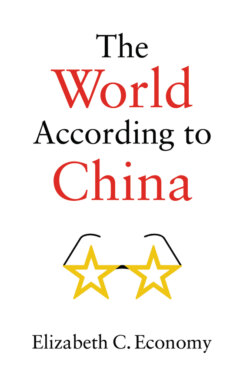Читать книгу The World According to China - Elizabeth C. Economy - Страница 10
The COVID-19 Test
ОглавлениеIn late December 2019, hospitals in Hubei, a relatively well-off province in central China, reported a string of cases of a “pneumonia of unknown etiology.” Dr. Ai Fen, the director of the Emergency Room of Wuhan Central Hospital, was the first to make a connection between the cases coming into the hospitals and reports of people at the Huanan Seafood Wholesale Market falling ill with high fevers. After alerting her hospital, she posted a warning to a number of colleagues. Her message caught the attention of other doctors, including Dr. Li Wenliang, a 34-year-old ophthalmologist, who worked at the same hospital. He sent a message to a group chat with his former medical school classmates: “A new coronavirus infection has been confirmed and its type is being identified. Inform all family and relatives to be on guard.”28 Wuhan’s public security officials moved quickly to silence Li, calling him in for questioning on January 1, 2020. They issued Li a formal reprimand for “making untrue comments” and “severely disturbing social order.” They also detained seven other Chinese citizens for “spreading rumors.”29 Li nonetheless continued to warn people. A few weeks later, he himself contracted the virus. For her part, Ai received a serious reprimand from the hospital’s disciplinary inspection committee, criticizing her for spreading false rumors and warning her not to tell anyone – not even her husband.30
As China’s leaders moved to control the spread of the virus, the strengths and weaknesses of the country’s political model were on full display. The high degree of political centralization and control over information prevented medical officials from alerting the Chinese people and the rest of the world about the virus and contributed to millions of Chinese leaving Wuhan, the virus’ epicenter, to travel during the Lunar New Year celebration, many unknowingly carrying the virus with them. Yet this same centralization of authority also enabled the government to lock down Wuhan on January 23, effectively preventing 11 million people from leaving the city and anyone else from entering. Public transport and highways were closed, and restrictions were placed on a number of other nearby cities and towns. All told, 50 million people in Hubei province were placed under strict quarantine by the end of January. The world watched in awe as Beijing mobilized 7,500 workers to construct two makeshift hospitals in under two weeks and commandeered enterprises across the country to manufacture much-needed PPE, including masks, gowns, and gloves. The CCP’s surveillance technology – more than 200 million cameras tracking people everywhere – and symbiotic relationship with the country’s leading technology companies, such as Tencent and Alibaba, allowed the government to track and ultimately contain the spread of the virus with a relatively high degree of efficiency.
Despite the government’s success, for the first time since Xi Jinping had come to power in 2012, Chinese citizens took to the internet in large numbers to challenge the official narrative. The death of Dr. Li prompted more than one million Chinese citizens to post their thoughts online: the British Broadcasting Corporation (BBC) reported that the top two hashtags were “Wuhan government owes Dr. Li Wenliang an apology” and “We want freedom of speech.” The internet activism was short-lived, however. Many citizen journalists who reported on the pandemic were later detained and sentenced to jail for “picking quarrels,”31 while others went missing.32
By the end of 2020, the Chinese government had erased from the public record any signs of early missteps or public dissent. The Chinese people had largely returned to their pre-pandemic lives, and China emerged as the world’s only large economy to post a positive growth rate. Within China, the story of China and the COVID-19 pandemic has now become a triumphal one: the Chinese government contained the virus and its critics in record time. Its state-centered model, which enabled the mobilization of resources, the CCP’s penetration of society and the economy, and control over information, not only succeeded but also stood in stark contrast to the disastrously chaotic response of the United States, the world’s leading democracy. Rather than spark a crisis in the CCP’s authority, the pandemic reinforced its legitimacy. On the international front, however, China’s pandemic diplomacy resulted in a far different outcome.
